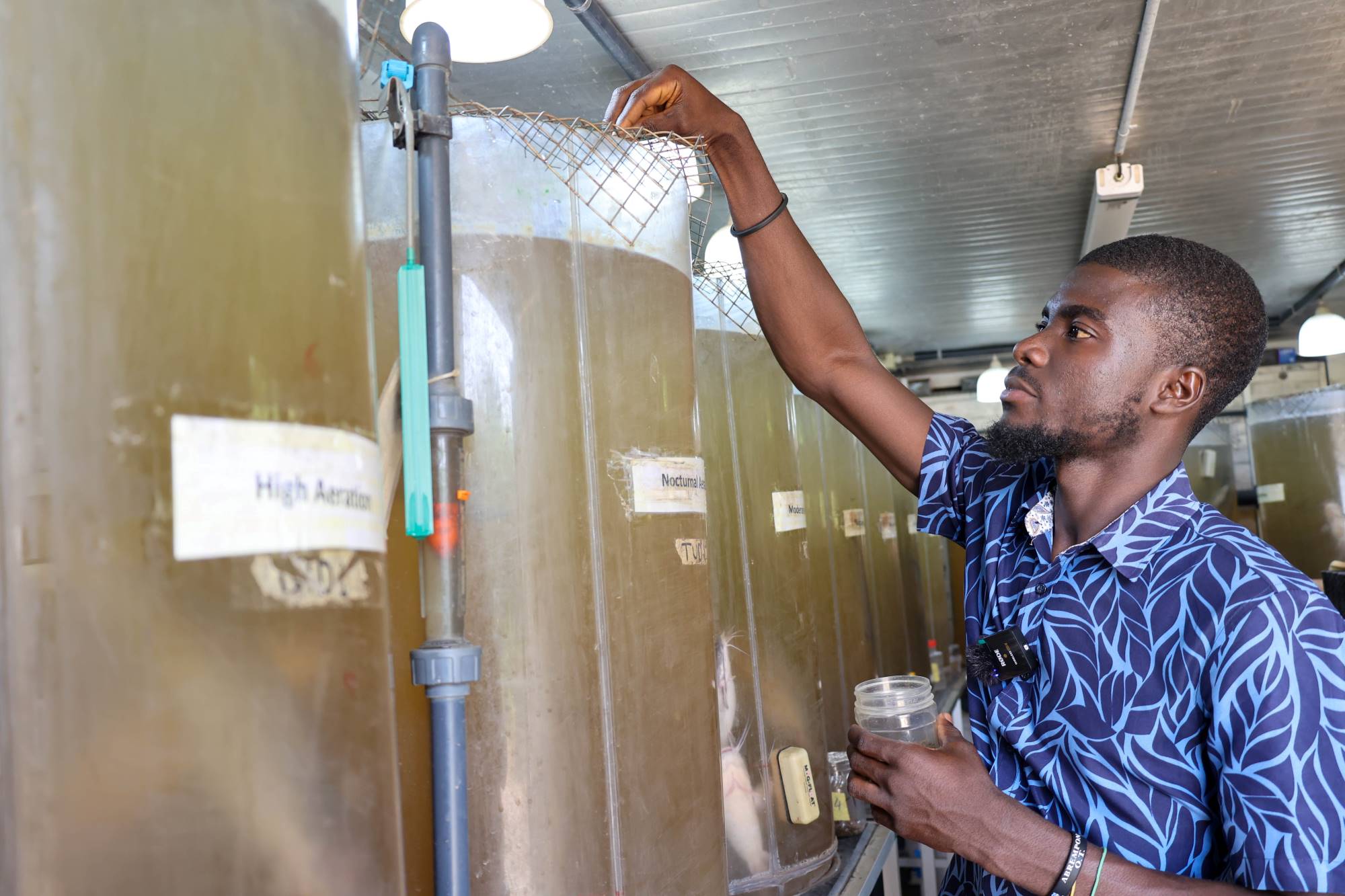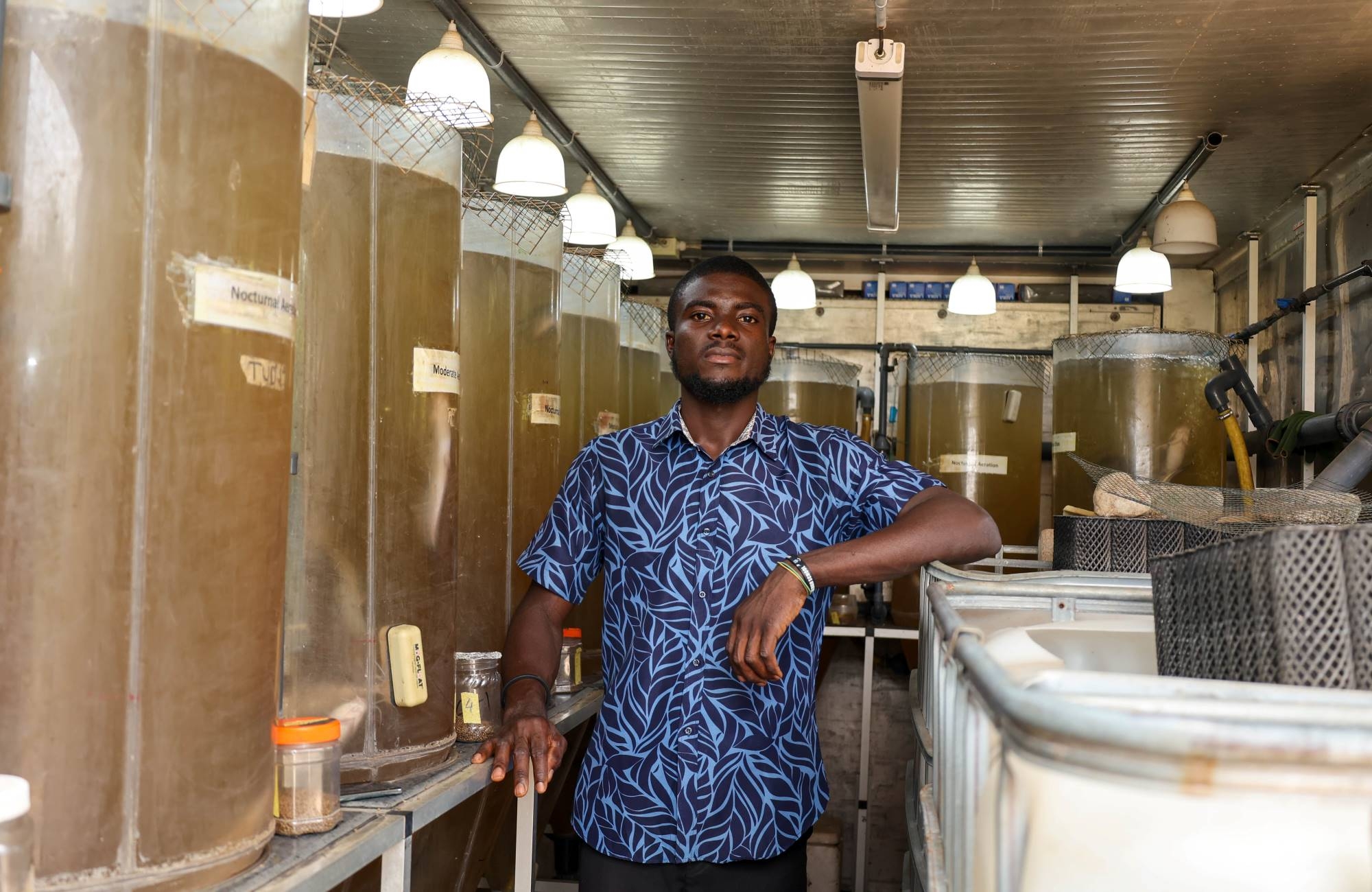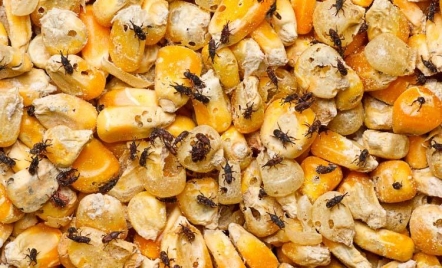African catfish (Clarias gariepinus) is a widely farmed fish in developing countries like Ghana due to its fast growth and ability to survive in low-oxygen conditions.
Increasing oxygen levels in water (aeration) boosts growth, survival, and hatching success, promoting sustainable aquaculture.
However, high production costs remain a challenge for Ghanaian farmers.
Kennedy Odame Baffour, a final-year student at the Department of Fisheries and Watershed Management, is researching optimal aeration levels to improve feed efficiency, reduce costs, and enhance catfish growth. His study tests different aeration levels: high (7 mL/L), moderate (3-4 mL/L), no aeration (1-2 mL/L), and nocturnal aeration (6 PM to 6 AM).
African catfish are facultative air-breathers, meaning they can absorb oxygen from both water and air.
Low oxygen levels force them to surface frequently, increasing predation risks and diverting energy from growth.
Oxygen is also vital for digestion; low levels lead to poor feed utilization and wasted resources, with feed accounting for 60% of production costs.

Kennedy’s experiment uses 121 catfish (average weight: 41 grams) in tanks of 11 fish each, monitored over 12 weeks.
The fish are fed commercial feed at 5% of their body weight, three times daily, with adjustments made every two weeks during sampling.
The study aims to identify the best aeration level for maximizing growth, feed efficiency, and survival while reducing air-breathing frequency and predation risks.
This could help farmers optimize resources, lower costs, and improve catfish farming sustainability.





Comments